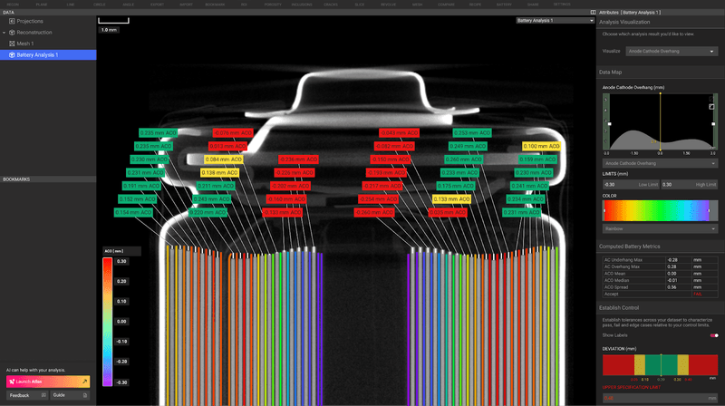Lumafield has introduced a Battery Analysis Module designed to enhance the safety and quality of batteries.
It provides automated tools to identify common battery defects such as layer delamination and was created to be a complete solution for battery manufacturers as it combines trend analysis and statistical process control tools.
The new module is the latest addition to Voyager, the brand’s cloud-based software for analyzing industrial x-ray computed tomography (CT) scans. The battery production industry is going through a boom time, with exceptional growth primarily driven by electric vehicles, renewable energy storage and portable electronics. This growth is expected to exceed US$130bn by 2030.
Battery manufacturing defects can lead to catastrophic failures, including fires and explosions that pose serious safety threats and can result in costly recalls. However, Lumafield says that the new Battery Analysis Module allows manufacturers to detect and visualize critical defects in lithium-ion batteries, including contaminants, anode overhang irregularities, delamination, and dents and bulges in enclosures. It also tracks these attributes over time, giving manufacturers real-time insights into quality issues as they develop.
Eduardo Torrealba, co-founder and CEO of Lumafield, said, “Batteries need to be nearly flawless to avoid catastrophic failures, and traditional quality control tools can’t look deeply enough to find every defect. Industrial CT is the best all-purpose inspection tool for batteries, and our Battery Analysis Module gives engineers the tools they need not only to catch flaws in real time but also to track quality trends and fine-tune their processes.”


